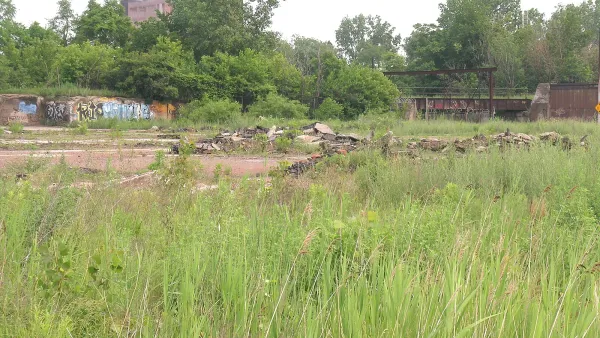The impacts of a tax break designed to create jobs, stimulate development, and reduce blight are proving hard to track.

Writing in Next City, Meir Rinde assesses the effectiveness of Philadelphia’s Keystone Opportunity Zones, a state tax break designed to stimulate development. “In short, KOZs eliminate almost all state and local taxes for the owners of the designated parcels and businesses in the zones,” the article explains.
“Supporters say it’s an essential tool for clearing blight, reinvigorating dormant land that might otherwise be too expensive to redevelop, and inducing employers to come to or remain in Pennsylvania rather than being enticed to other states with their own generous incentive programs.” But because there is no system to keep track of how many jobs the program creates or how much tax revenue it forgoes, it’s difficult to tell how effective the program has been at achieving its stated goals.
“Initially just an effort to revive 12 properties across the commonwealth, the program has morphed into a huge program covering more than 2,000 parcels, including some that were already being developed or are in economically booming neighborhoods.” The lack of obligations attached to the program means many sites—around 70 percent, according to a state legislative committee report—remain completely or partially undeveloped while their owners receive the tax abatement. A 2019 report found that “From 2008 and 2017 Philadelphia had foregone between $40 million and $125 million each year in two types of business taxes, the BIRT and NPT, or $645 million total in 2019 dollars.”
The same report “recommended approving KOZs only where new development would not occur anyway; providing prospective tenants with clearer estimates of the benefits of locating in a KOZ; changing laws to allow cities to offered tailored payment in lieu of taxes (PILOT) plans to KOZ businesses; and limiting use of the program by companies that produce few jobs.”
FULL STORY: Keystone Opportunity Zones Power Many Of Philly’s Top Development Projects. Are They Worth It?

Analysis: Cybertruck Fatality Rate Far Exceeds That of Ford Pinto
The Tesla Cybertruck was recalled seven times last year.

National Parks Layoffs Will Cause Communities to Lose Billions
Thousands of essential park workers were laid off this week, just before the busy spring break season.

Retro-silient?: America’s First “Eco-burb,” The Woodlands Turns 50
A master-planned community north of Houston offers lessons on green infrastructure and resilient design, but falls short of its founder’s lofty affordability and walkability goals.

Test News Post 1
This is a summary

Analysis: Cybertruck Fatality Rate Far Exceeds That of Ford Pinto
The Tesla Cybertruck was recalled seven times last year.

Test News Headline 46
Test for the image on the front page.
Urban Design for Planners 1: Software Tools
This six-course series explores essential urban design concepts using open source software and equips planners with the tools they need to participate fully in the urban design process.
Planning for Universal Design
Learn the tools for implementing Universal Design in planning regulations.
EMC Planning Group, Inc.
Planetizen
Planetizen
Mpact (formerly Rail~Volution)
Great Falls Development Authority, Inc.
HUDs Office of Policy Development and Research
NYU Wagner Graduate School of Public Service



























